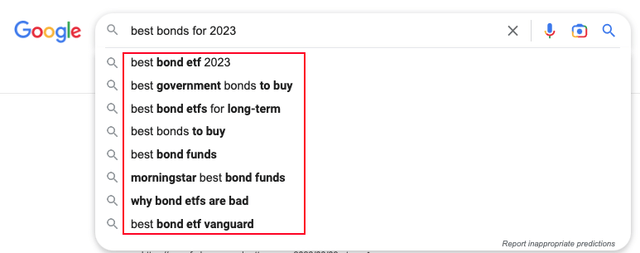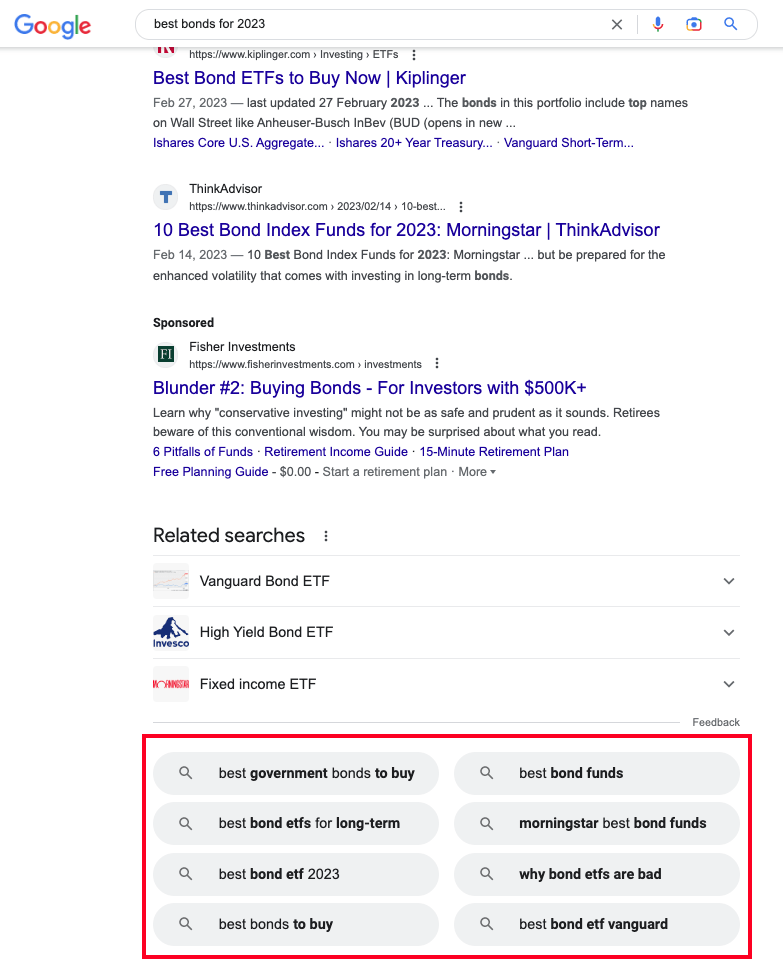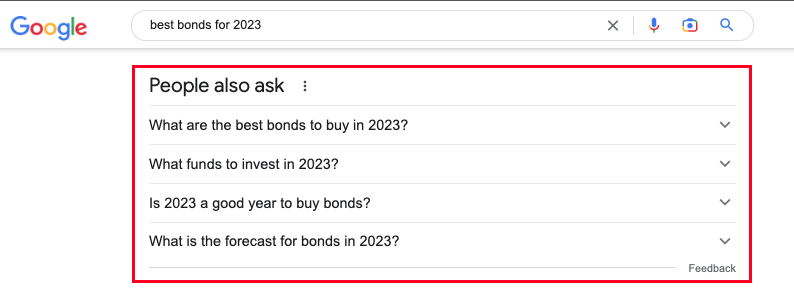Best Practices To Improve SEO On Your SA Articles

Summary
- Drawing readers from search engines to your Seeking Alpha content can help improve brand awareness.
- Many contributors ask for best practices to improve their SEO. Below we offer nine of our best tips to try out.
- Some of these tips include creating compelling titles, including appropriate keywords, using proper subheadings, and sharing your content via social media.
Editor's note: Seeking Alpha is proud to welcome SA Nic Thibodeau as a new contributor. It's easy to become a Seeking Alpha contributor and earn money for your best investment ideas. Active contributors also get free access to SA Premium. Click here to find out more »
Chonlatee Sangsawang/iStock via Getty Images
Here are our 9 top tips for drawing more readers to your articles via search engine results, such as a Google results page:
Tip #1: Write a great, keyword-rich, relevant title
The most important thing that decides whether people click on your article is your title. Make sure it's compelling, without being flashy, while staying true to the content of the article.
Ask yourself: What question does my article answer for readers? Then, construct the title around that. Keep the title straightforward to avoid truncation.
To help your content rank highly on search engines, consider what keywords someone may use to search for content such as your article. Then, try to incorporate those keywords into your title close to the front of the title. For example, if you are writing about Apple stock try to include “Apple stock” into your title.
Select your best titles and try them out on a few friends. Feel free to ask the editors to help you, in a note on your submission.
Tip #2: Include interesting pictures and add ALT tags
Google picks up the primary image in your article to display next to the headline. Making sure that the first image is relevant and interesting, and includes an ALT tag (these are content descriptors that tell search engines what a web page is about), increases the appeal and may increase clicks to your article.
Here's how to add an ALT tag:
- Find the "Insert/edit image" icon on the editing toolbar (it looks like a landscape to the right of the dollar sign). This can be used to upload a new image saved locally on your computer, or to edit an image that's copy-pasted into your submission (make sure to click on the image before using the icon).
- In the dialog box, find the section where it says "Non-visible Description". This is your image's ALT tag. Add a descriptive caption to your image that clearly describes the image in terms that users may be searching for. Use plain and simple text that best conveys the image and its relevance to the topic at hand.
For example, if you have an image of a woman talking on the phone, then the "Non-visible Description" can simply be, "A woman talking on a phone".
Tip #3: Use powerful header wording and sub-header formatting
The Section Header font on the submissions form should be used to create subheadings. The button looks like a capital H followed by a 2, and it's on the far left of the tool bar at the top of the form.
Using appropriate subheadings is better than just bolding text for SEO as it makes your content easier to understand for search engines and thus, ideally, perform better in search.
Similar to titles, sub-headers should be keyword-rich and designed to answer readers' questions: What are they likely thinking about this stock?
Spell out relevant points in clear and direct headers, and your search performance may improve. For example, if you're discussing a stock’s price movement, you can use a subheading “Why Did [ticker/company name] Stock’s Price Go Up?” followed immediately by a concise answer to that question. Additional context can then be added after that answer.
Ideally, the terms used in your titles, captions, and subheadings should all be clearly connected to keywords readers are likely using to surface content on the idea being discussed. Look into related keywords around the main topic and use those in the subheaders and body content, if you can do so naturally.
For example, if an author was considering writing about “best bonds for 2023”, they can go to Google, search that query “best bonds for 2023” and look at what shows up.
The first area that can be checked is the “Related searches” area that populates at the top of the search results page while you type in your query and at the bottom of the search result page (once the search has been completed) where it says “Related searches”.
These are often related questions or keywords that people search for information on and, if relevant to your content, may be worth consideration as an addition to your article.
An example of Related Searches that shows while inputting a query (Google) An example of Related Searches that shows at the bottom of a search results page. (Google)

The second area which can be referred to is the “People Also Ask” section that shows up most times (but not every time) on the search engine result page. As the name suggests, this section will include specific questions often asked that should be relevant to your initial query.
An example of the People Also Ask section on a Google search results page. (Google)
Tip #4: Use bulleted or numbered lists where appropriate
When writing your article, if you have a list of related items, consider condensing those into bulleted or numbered lists. These can be helpful in creating a better user experience and can also aid in improving an article’s performance in organic search.
Bulleted or numbered lists can make content easier for users to skim through, comprehend, and refer back to. Additionally, search engines sometimes display such lists on their results pages which can highlight your article and drive more users to your content.
Tip #5: Publish a focus article (with a primary ticker)
Articles tagged with a primary ticker - a stock/ETF in focus - will get the most exposure, as they are sent out as real-time alerts (RTAS) to subscribers of those tickers.
Keep in mind that in order to qualify as a focus article, the analysis must thoroughly and squarely focus on the primary ticker.
Tip #6: Include relevant links
If you have written previously about a specific stock or subject that you are covering again, it’s a good idea to link back to those articles. This is helpful for both users and search engines to discover your previous content which may lead to further reach. Our editorial team offers guidance on follow-up articles here.
Additionally, you may have been asked by editors, in feedback on your submissions, to link to sources to support your ideas. The benefit of these sources cannot be overstated, especially if you link to authoritative sites such as government websites, Seeking Alpha pages (such as other articles, earnings pages, transcripts, etc.), and other established media sites. Try to avoid smaller, lesser known sites that lack credibility as this can impact the likeliness of your content showing up on search engines.
Tip #7: Avoid overly brief articles
Longer articles often do better in search. More context with well-explained theses, examples, and plenty of information for readers can help search engines better understand which users to serve your content to. An overly sparse article (less than 500 words) can be a disappointing experience for readers, so fleshing out your ideas may lead to increased readership and an increase in followers.
Tip #8: Share!
It's hard to overestimate the positive effect sharing has on your article's reach. Sharing gets your article shown in the social feeds of your connections. If they share it, it gets shown in the social feeds of their connections too. Google indexes sharing to understand how much users engage with an article and drive search results.
At the very least, be sure to use your own Facebook, Linkedin, and Twitter accounts to share each of your articles.
Tip #9: Engage in the article comments
Participate in the comment stream on articles, especially your own. Articles are oftentimes just the springboard for discussion and active communication, and there's nothing quite as valuable as the original author being a part of the conversation. In many cases, readers will ask questions and raise issues that can also serve as the kernel for a follow-up article on the same topic. Search engines can also review the content in comments and serve that to users using search engines who may find it helpful.
